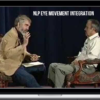Doug O’Brien – Sleight Of Mouth
$69.00 $19.00
Total Sold: 5
»Instant Delivery
Description
Doug O’Brien – Sleight Of Mouth
 Win Every Argument, Conquer Every Negotiation, Close Every Sale, And Eliminate All Objections With The Power of Sleight of Mouth
Win Every Argument, Conquer Every Negotiation, Close Every Sale, And Eliminate All Objections With The Power of Sleight of Mouth
This Little Known NLP technique has the power to put all of your objection erasers on autopilot. You’ll leave people wondering, “How did he do that?”
What is Sleight of Mouth?
Sleight of Mouth is a persuasion skill, a vehicle for the reframing of beliefs. It is a system of 14 different patterns of response to a stated belief. A system that, once mastered, can allow you to always have a response that will effectively elucidate your position and help you to persuade rather than be persuaded. Simply put, it will help you win any argument, be verbally powerful and powerfully verbal.
Where Did Sleight of Mouth Come From?
Sleight of Mouth is a result of the methodology of NLP being applied to NLP, or, more properly, to Richard Bandler’s debate skills. NLP grew out of Bandler and Grinder analyzing and codifying the methods of Milton Erickson, Gregory Bateson, Virginia Satir and others. Robert Dilts applied this same methodology to Bandler’s own unique way with people. In his NLP Certification courses, Bandler would challenge participants to use their newly acquired skills to persuade him that a belief system adopted for the occasion (eg.”I can’t see the curve, therefore the world is flat.”) was wrong.
As hard as they tried, Bandler was always able to field an army of responses to turn their “logical” arguments around. Dilts was impressed with this and then fascinated to find that he was beginning to discern the patterns Bandler used. Dilts systemized the patterns into specific categories and developed an elegant mind map of them, which makes it wonderfully easy and fun to use.
As an example, if someone were to say to you,”Since I have too many responsibilities, I can’t get to the gym and work out,” you would immediately recognize this syllogism as being perfect for a Sleight of Mouth treatment. The syllogism is A=B, a “complex equivalence.” Statement A, “Too many responsibilities,””means”(=) statement B, “I can’t work out.” Now that might be true, but it’s not necessarily true.
For your reply you could use the Sleight of Mouth pattern called “Redefine” and say, “It’s not that you have too many responsibilities, it’s that you have disorganized activities.” (redefining the word “responsibilities” in statement A) or “It’s not that you can’t work out, you can’t work out how to put yourself and your needs first.” (redefining “work out” in statement B).
Another Pattern you could use is the one called “Hierarchy of Criteria.” Using this pattern you could ask, “Isn’t it more important to take care of your self and your health than to be so micro-managing?”
Here’s a sampling of the complete Sleight of Mouth patterns:
Let’s say you’ve come into work late several times and your boss calls you in and growls, “You’re being late shows you don’t care about the job.”
There are 14 different responses you can use:
#1 Reality Strategy
How do you know lateness and caring are the same thing?
#2 Model of the World
Some people believe caring is shown by quality of the job done and the results obtained.
#3 Counter Example
We all know people who are always on time and yet are goof-offs once they get here.
#4 Intent
My intention is not to be late or uncaring but to give you the best quality time and highest productivity while I’m here.
#5 Redefine
I wasn’t late, I was delayed in traffic.
#6 Chunking Up
Are you saying the most important aspect of my job is showing up on time?
#7 Chunking Down
How specifically are lateness and not caring the same thing?
#8 Metaphor or Analogy
If a surgeon is late for dinner because he is saving a life, does that mean he doesn’t care about his wife’s cooking?
#9 Another Outcome
The real question isn’t whether I’m late or I’m caring. The real question is how much I’m producing for the company.
#10 Consequence
If I wasn’t late I wouldn’t have been able to close the sale while I was at a breakfast meeting.
#11 Hierarchy of Criteria
Isn’t it more important to focus on how much the person gives while on the job rather than punctuality?
#12 Apply to Self
Gosh, I wish you’d cared enough about me to tell me this sooner.
#13 Changing Frame Size
Over time, you’ll see I brought in more business in a timely fashion for the company than all of the people who showed up to work on time.
#14 Meta Frame
Lots of progressive companies are working with flex time for their high producers. I thought you were a forward thinking manager.
More courses from the same author: Doug O’Brien
Delivery Policy
When will I receive my course?
You will receive a link to download your course immediately or within 1 to 21 days. It depends on the product you buy, so please read the short description of the product carefully before making a purchase.
How is my course delivered?
We share courses through Google Drive, so once your order is complete, you'll receive an invitation to view the course in your email.
To avoid any delay in delivery, please provide a Google mail and enter your email address correctly in the Checkout Page.
In case you submit a wrong email address, please contact us to resend the course to the correct email.
How do I check status of my order?
Please log in to HealingCourse account then go to Order Page. You will find all your orders includes number, date, status and total price.
If the status is Processing: Your course is being uploaded. Please be patient and wait for us to complete your order. If your order has multiple courses and one of them has not been updated with the download link, the status of the order is also Processing.
If the status is Completed: Your course is ready for immediate download. Click "VIEW" to view details and download the course.
Where can I find my course?
Once your order is complete, a link to download the course will automatically be sent to your email.
You can also get the download link by logging into your HealingCourse account then going to Downloads Page.
Related products
Total sold: 3









